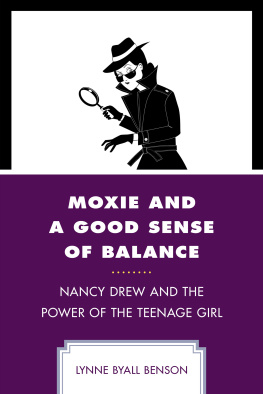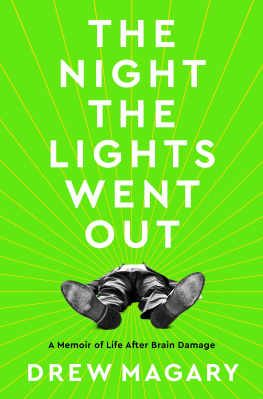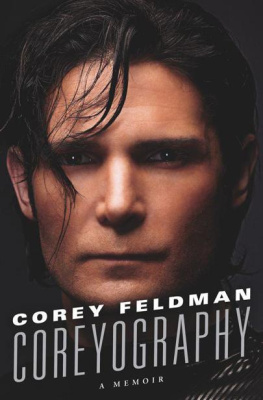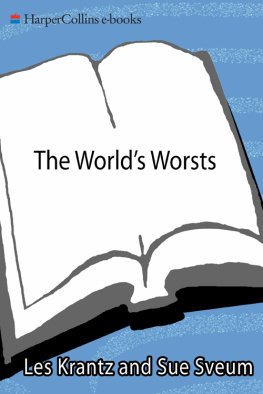A Ballantine Book
Published by The Ballantine Publishing Group
Copyright 2000 by Leah and Elina Furman
All rights reserved under International and Pan-American Copyright Conventions. Published in the United States by The Ballantine Publishing Group, a division of Random House, Inc., New York, and simultaneously in Canada by Random House of Canada Limited, Toronto.
No part of this book may be reproduced or transmitted in any form or by any means, electronic or mechanical, including photocopying, recording, or by any information storage and retrieval system, without permission in writing from the publisher.
Ballantine and colophon are registered trademarks of Random House, Inc.
www.randomhouse.com/BB/
Library of Congress Catalog Card Number: 00-107182
eISBN: 978-0-307-48581-6
v3.1
Contents
INTRODUCTION
 Americas Angel
Americas AngelOur first meeting with Drew Barrymore took place when we were still in grade school. Although that was some eighteen years ago, we remember that day as clearly as if it were yesterday. We piled into the backseat of our parents navy blue Buick Skylark and headed for the movie theater to see E.T.The Extra-Terrestrial. Throughout the ride, all we could think about was the upcoming movie. We couldnt wait to get in our seats and see what all the kids in school had been talking about. At the time, wed never heard the name Drew Barrymore before. We didnt know who she was, what she looked like, or where she came from. All we cared about was that lovable alien whod made such an impression on us during TV commercials for E.T.
The two magical hours that we spent in the theater that Sunday afternoon surpassed our wildest expectations. As we stumbled out of our seats, trying to choke back the lumps in our throats and the tears in our eyes, we knew that for as long as we lived, we would never forget either E.T., or the pudgy little blond girl who almost stole the show.
Her name, of course, was Drew Barrymore.
While she might not have been the stuff of household conversation just yet, her face was permanently embedded in the mind of every man, woman, and child whod seen Steven Spielbergs highest grossing movie to date, E.T.
Pretty soon, Drew was dubbed Americas little darling and began popping up all over. When she starred in 1984s Irreconcilable Differences, we talked about going to see the new Drew Barrymore movie. She was the first movie star with whom kids of a certain age could identify, the Shirley Temple of the 1980s, the cutest, the most famous, the best-loved kid in the U.S., perhaps the world.
President Reagan and the First Lady invited her to the White House. NBC put her front and center on the stage of Saturday Night Live. The Academy Awards and the Golden Globes saw her walking the red carpet year after year. Drew was always in the spotlight.
And then, just like that, she was gone. Not a snapshot, not a movie, not a word. Nothing.
In January 1989, she hadnt been out of circulation long enough for anyone to notice a conspicuous absence. Thats when the National Enquirer sounded the alarm: E.T. STAR IN COCAINE AND BOOZE CLINIC-AT 13!
Parents were horrified. Kids of all ages were dumbfounded. How could this have happened to our little Drew?
The scion of the Barrymore acting dynasty, Drew was nothing less than a national treasure. For generations, the Barrymores had been making headlines on the stage, on the screen, and on the party circuit. Everyone knew of the illustrious familys personal woes, checkered with alcoholism and drug addiction. But Drew was supposed to be different. Shed spoken out against drug abuse. Shed starred in our favorite films. Shed captured our hearts as we watched her grow up. This wasnt supposed to happen to her.
As details of Drews addiction began to leak out, the controversy wreaked havoc upon her image as a fun-loving but essentially down-to-earth child star. Overnight, Drew became the poster girl for excess and teenage rebellion. She went from everyones role model to public enemy number one. Indeed, prevailing wisdom suddenly dictated that Drew Barrymore was nothing more than a very bad girl.
It was Drews darkest hour. When she got out of rehab, no one wanted to hire her. Many of her old friends disappeared without a trace. Cast out of the industry, Drew might have easily reverted to her old habits. But just as all signs pointed to what might have been another tragic ending in the Barrymore saga, Drew chose to do the unpredictableshe fought back.
At fourteen years of age, Drew Barrymore authored Little Girl Lost, the autobiography that detailed her descent into and arduous climb out of the depths of despair. The book was an instant best-seller, and Drew was back on top, a heroine to young adults nationwide.
That was more than ten years ago. Over the last decade Drew has worked steadily toward reclaiming the very fame, fortune, and respect that shed been so quick to throw away as a child. The 1990s have been good to Drew, and while this biography will recap some of the events narrated in Little Girl Lost, it is the new and triumphantly self-improved Drew who is the shining focus of Happily Ever After: The Drew Barrymore Story.
ONE
 Heiress
HeiressDynasty the word alone conjures up a parade of grandiose images, which is perhaps why so much has been made of Drew Barrymores legacy. Her genealogy bears the honorable Barrymore coat of arms; her dominion is the world of stage and screen; her crown jewels are gold-plated Oscars and acclaimed films. To earn this distinction, she had only to be born. Not unlike Prince William, Drew is the heir to a royal family throne. Indeed the Barrymores are called The First Family of the Theater. Most of us naturally assumed that with this throne came a fortune.
Hearing of Drews celebrated lineage, we believed she was born with the proverbial silver spoon. Hollywood royalty, they said, and we envisioned her coming of age on a sprawling Bel Air estate where a staff of servants was paid to cater to her every childish whim. Acting dynasty, they said, and we were led to understand that she was a princess and her life a fairy tale.
How were we to know the truth: Drew Barrymore was born into a single-parent household, a latch-key kid completely disconnected from the deceased ancestors who had so glorified her famous last name? Drew and I started with nothing but the clothes on my back, Drews mother, Jaid Barrymore, said on This Evening with Judith Regan.
No family. No friends. No money. How had it come to this?
Drew is the proud heiress of thoroughbred thespian bloodlines as pure as they are long. Reaching back into the 1800s, the glamour-personifying predecessors who informed Drews talent were more than mere superstars. For over a century, the Barrymores have represented Americas cultural aristocracy, that singularly charming, witty, and talented coterie that best exemplifies all that is most noble and most eccentric about true greatness.













